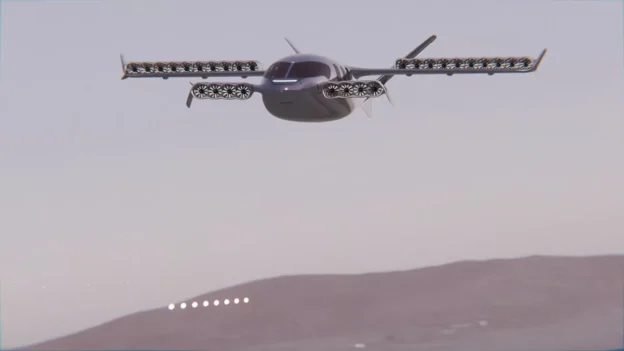Sirius Aviation and BMW Designworks, has unveiled the “CEO Jet,” the world’s first liquid hydrogen eVTOL, which has 28 ducted fans powered by hydrogen fuel cells, achieving a range of 1,150 miles per trip.
The Sirius Aviation project
The Swiss aviation company announced its project to develop two variants of a hydrogen-powered vertical take-off and landing (VTOL) electric aircraft, under a collaboration with BMW Designworks and the Sauber Group. At the MOVE Expo in London, both the interior and exterior of the CEO Jet, presented by the company’s founder Alexey Popov, were unveiled.
The aircraft’s design remains true to its essential characteristics. With a V-tail configuration, the aircraft incorporates 28 fans distributed between the wings and canard, which can be tilted to facilitate vertical takeoff and subsequently positioned for horizontal flight, reaching a speed of 320 mph.
The CEO Jet will generate a noise similar to that of a dishwasher and fly at an altitude of 21,000 feet. In addition, it will include an emergency parachute system, which will automatically deploy in case of emergency due to system failure, ensuring the safety of its occupants.
CEO Jet, the first liquid hydrogen eVTOL
According to Popov, it is 70% completed and tested, reaching level 7 of technological readiness. This system consists of a liquid hydrogen tank located at the rear of the fuselage that feeds a fuel cell. a fuel cell, which charges the main batteries that drive the fans. which charges the main batteries that drive the fans. The company has concentrated much of its efforts on the development of its hydrogen electric powertrain.
The interior of the eVTOL features a minimalist cockpit with pilot controls and a digital display providing key flight and navigation data. The three passenger seats, designed to offer ample space, are equipped with side tables, cup holders, storage, reading light and cargo trays.
Sirius Aviation plans to start serial production in 2028, despite the regulatory and financial challenges they have yet to overcome. The company has also previewed its next project, the “sky SUV”, designed for affluent travelers and adaptable to different scenarios, including water landing. This model, called Adventure Jet, will include inflatable pontoons, hawk-eye cameras, search lights and a dust cover, as well as a roof shelter and off-grid connectivity tools.
Follow us on social networks and don’t miss any of our publications!
YouTube LinkedIn Facebook Instagram X
Source: AP News
Photo: Sirius Aviation

